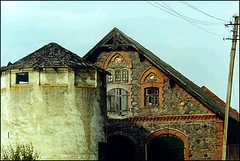"The majority of Estonian food is very simple, and for a long time, grain and bread were in first place, with potatoes being added later. Milk, salted fish, and pork have also been part of the daily menu.
Traditional Estonian dishes are conspicuous for the simplicity of their preparation. The same food could vary somewhat from place to place. The food was given a unique pleasant taste by the threshing barn oven, and any seasoning cannot duplicate its effect. The way of placing the food on the table was extremely simple: soup in a wooden bowl, a large piece of meat on a platter, accompanied by rye bread. At other times, however, butter in a wooden tub, hot barley bread with cold fresh milk, and stewed mulgi sauerkraut with pork.
The staple food for Estonians used to be bread and various other flour products. Whereas, bread was considered to be sacred, and one was not supposed to throw it or step on it. Other food, primarily animal foodstuffs, such as meat (salted), fish (dried, salted, fresh), and butter were called bread side dishes. Milk and dishes prepared from it was used infrequently. During the milking season, butter was produced and salted to preserve it for fall and winter. Pea, bean, lentil, barley, and flour soups played an important role at the dining table. Porridges were also popular.
Food for festive occasions included barley sausages (bloodless white sausages in North-Estonia, and blood sausage in South-Estonia), pig’s head, pork, and headcheese. Small pies with various fillings were also prepared.
Starting at the end of the 19th century, new foods, which previously has only prepared in the towns and manors, started to proliferate. The amount of store-bought food and seasoning increased. Different types of baked white breads and cakes; barley porridge was often replaced by farina or rice pudding. Herring and potatoes appeared on the table.
The grain foods were most important for Estonians, and barley and rye were used most often. Today, Estonians still love rye bread, which has been an everyday food since the 12th century. Dishes from oats and hempseed were prepared to a lesser extent, and wheat products did not reach the Estonian food table until the end of the 19th century."
From here .
Jun 10, 2009
Subscribe to:
Post Comments (Atom)








No comments:
Post a Comment